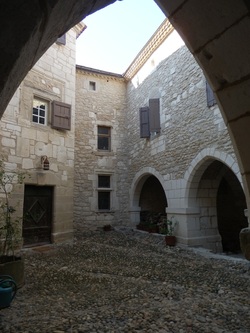
Traditionally built properties, whether originally built as dwellings or animal outbuildings were constructed in a totally different format than the modern dwellings of today.
They were invariably built with little or no foundations, no damp proof course/membrane and no cavities. By that fact alone, new building materials are poorly suited to renovate or repair traditional properties.
Old properties will draw moisture from the ground and as a result, this needs to evaporate. The use of modern materials i.e. cement, plasterboard, gypsum plasters and modern paints, can stop the evaporation process and trap the water within them. This can occur internally or externally.
Using traditional techniques and materials that are breathable, allow any moisture to slowly evaporate into the atmosphere.
The most common request from customers is to come and repair 'bad building practice' on older properties. From water ingress to cement damage/gypsum damage.
WHAT HAPPENS!!
An example; a 17th Century barn was being renovated, the previous owners had started the repair by rendering the external south facing gable end with cement render and plastered the internal wall with cement/gypsum plaster. Over the years the external wall render had 'blown' (become detached from the stone) and rain was constantly entering behind the render and into the fabric of the wall (stone and lime). There was a constant smell of damp and the internal walls were damp to the touch.
The solution to this problems was to strip off the external cement render and allow the wall to start to dry. At the same time, the internal plaster was removed and while doing so, the walls were running with water! The wall had acted like a sponge and had soaked up all the moisture coming in, but it had nowhere to go, so it sat within the modern wall coverings.
As a result of this and due to excess moisture being retained within the wall, the timber floor joists were completely rotten away within the wall and the floor, in places, totally unsupported.
This barn had stood for nearly 400 years with its original oak beams and yet within 8 years, due to modern materials being used, the oak had rotten within the wall and the wall had become unstable in parts and had to be re-built.
Within a very short period of time, the excess moisture had gone, the stone had returned to its original colour and the total drying out period had begun.
They were invariably built with little or no foundations, no damp proof course/membrane and no cavities. By that fact alone, new building materials are poorly suited to renovate or repair traditional properties.
Old properties will draw moisture from the ground and as a result, this needs to evaporate. The use of modern materials i.e. cement, plasterboard, gypsum plasters and modern paints, can stop the evaporation process and trap the water within them. This can occur internally or externally.
Using traditional techniques and materials that are breathable, allow any moisture to slowly evaporate into the atmosphere.
The most common request from customers is to come and repair 'bad building practice' on older properties. From water ingress to cement damage/gypsum damage.
WHAT HAPPENS!!
An example; a 17th Century barn was being renovated, the previous owners had started the repair by rendering the external south facing gable end with cement render and plastered the internal wall with cement/gypsum plaster. Over the years the external wall render had 'blown' (become detached from the stone) and rain was constantly entering behind the render and into the fabric of the wall (stone and lime). There was a constant smell of damp and the internal walls were damp to the touch.
The solution to this problems was to strip off the external cement render and allow the wall to start to dry. At the same time, the internal plaster was removed and while doing so, the walls were running with water! The wall had acted like a sponge and had soaked up all the moisture coming in, but it had nowhere to go, so it sat within the modern wall coverings.
As a result of this and due to excess moisture being retained within the wall, the timber floor joists were completely rotten away within the wall and the floor, in places, totally unsupported.
This barn had stood for nearly 400 years with its original oak beams and yet within 8 years, due to modern materials being used, the oak had rotten within the wall and the wall had become unstable in parts and had to be re-built.
Within a very short period of time, the excess moisture had gone, the stone had returned to its original colour and the total drying out period had begun.
